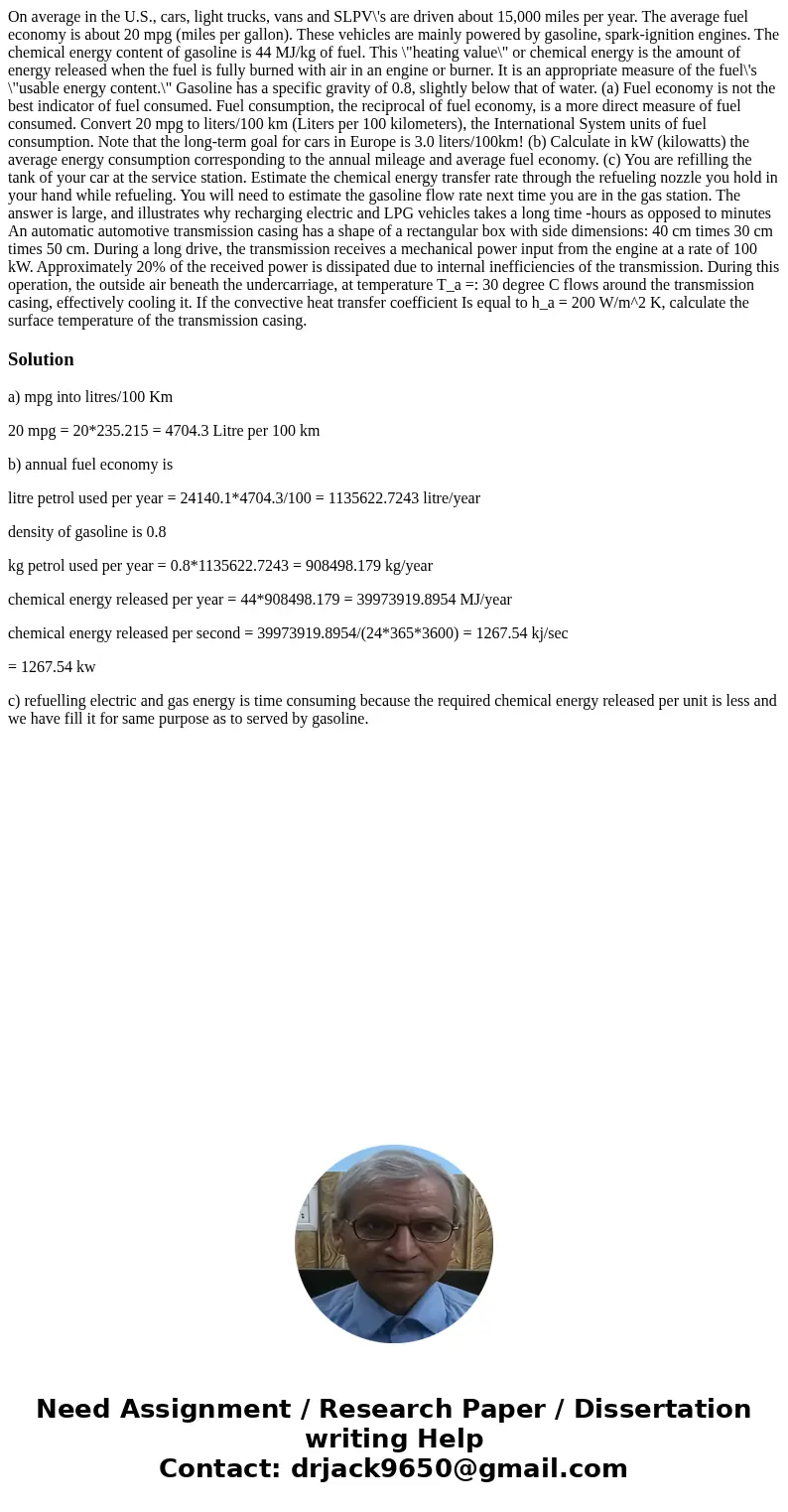On average in the US cars light trucks vans and SLPVs are dr
On average in the U.S., cars, light trucks, vans and SLPV\'s are driven about 15,000 miles per year. The average fuel economy is about 20 mpg (miles per gallon). These vehicles are mainly powered by gasoline, spark-ignition engines. The chemical energy content of gasoline is 44 MJ/kg of fuel. This \"heating value\" or chemical energy is the amount of energy released when the fuel is fully burned with air in an engine or burner. It is an appropriate measure of the fuel\'s \"usable energy content.\" Gasoline has a specific gravity of 0.8, slightly below that of water. (a) Fuel economy is not the best indicator of fuel consumed. Fuel consumption, the reciprocal of fuel economy, is a more direct measure of fuel consumed. Convert 20 mpg to liters/100 km (Liters per 100 kilometers), the International System units of fuel consumption. Note that the long-term goal for cars in Europe is 3.0 liters/100km! (b) Calculate in kW (kilowatts) the average energy consumption corresponding to the annual mileage and average fuel economy. (c) You are refilling the tank of your car at the service station. Estimate the chemical energy transfer rate through the refueling nozzle you hold in your hand while refueling. You will need to estimate the gasoline flow rate next time you are in the gas station. The answer is large, and illustrates why recharging electric and LPG vehicles takes a long time -hours as opposed to minutes An automatic automotive transmission casing has a shape of a rectangular box with side dimensions: 40 cm times 30 cm times 50 cm. During a long drive, the transmission receives a mechanical power input from the engine at a rate of 100 kW. Approximately 20% of the received power is dissipated due to internal inefficiencies of the transmission. During this operation, the outside air beneath the undercarriage, at temperature T_a =: 30 degree C flows around the transmission casing, effectively cooling it. If the convective heat transfer coefficient Is equal to h_a = 200 W/m^2 K, calculate the surface temperature of the transmission casing.
Solution
a) mpg into litres/100 Km
20 mpg = 20*235.215 = 4704.3 Litre per 100 km
b) annual fuel economy is
litre petrol used per year = 24140.1*4704.3/100 = 1135622.7243 litre/year
density of gasoline is 0.8
kg petrol used per year = 0.8*1135622.7243 = 908498.179 kg/year
chemical energy released per year = 44*908498.179 = 39973919.8954 MJ/year
chemical energy released per second = 39973919.8954/(24*365*3600) = 1267.54 kj/sec
= 1267.54 kw
c) refuelling electric and gas energy is time consuming because the required chemical energy released per unit is less and we have fill it for same purpose as to served by gasoline.

 Homework Sourse
Homework Sourse